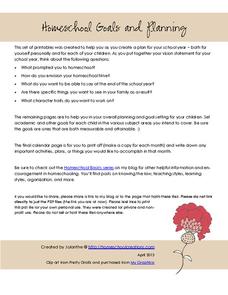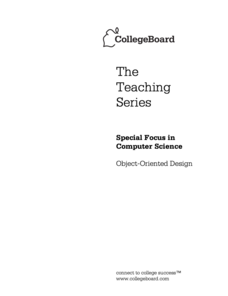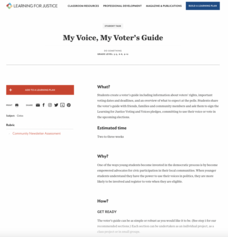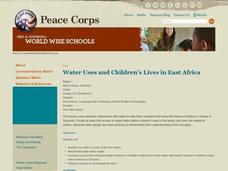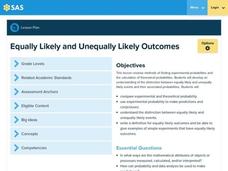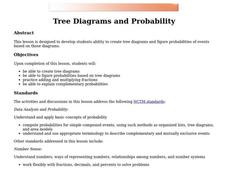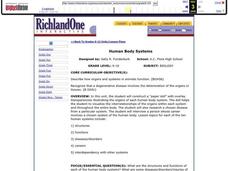Curated OER
Born Gay
Is a person's sexual orientation determined at birth? With the informative website, scholars prepare for a debate about the topic. They learn the top pro and con arguments and read through a historical timeline of homosexuality. They...
Missouri Department of Elementary
Putting on Armor
Middle schoolers learn how to protect themselves from risky behaviors with a lesson that has them role play several scenarios and demonstrate ways that they might do to stay safe. Class members then use what they have learned to build a...
Texas Education Agency (TEA)
Principles of First Aid and Medical Emergencies
Here is a great resource to guide your instruction on identifying medical emergencies and administering first aid when necessary. Topics covered include assessing the scene of an emergency, calling EMS, and addressing a range of...
Homeschool Creations
Homeschool Goals and Planning
Set clear planning goals and objectives for your school year with this nice set of printables. Designed for homeschool teachers, these handouts include spaces for outlining your school's mission and goals, objectives for each...
National Gallery of Art
Islamic Art and Culture
Provided by the National Gallery of Art in Washington, this resource for teachers examines Islamic art, including calligraphy, arabesques, and geometric designs. A recounting of the spread of the faith and the tumultuous political...
Cornell University
Glued into Science—Classifying Polymers
Explore the unique characteristics of polymers. A complete lesson plan begins with a presentation introducing polymers. Following the presentation, young scientists develop a laboratory plan for creating substances using polymers....
American Psychological Association
Facebook Activity
Imagine if Sigmund Freud or Charles Darwin had a Facebook page. As part of a study of major historical figures in the field of psychology, class members are assigned a psychologist and design a mock Facebook page that includes...
US Institute of Peace
What Does It Take to Be a Peacebuilder?
Is the spirit of peacebuilding already inside you? Scholars take a closer look at the characteristics of peacebuilders, past and present, in instructional activity 13 of a 15-part series. Individuals identify common traits of...
Reed Novel Studies
The Princess and The Goblin: Novel Study
The Princess and the Goblin's main character, Irene, has a special bond is with her magic great-great-great grandmother that lives in a mysterious part of the castle. Worksheets focused on George MacDonald's novel offer eight vocabulary...
College Board
Object-Oriented Design
Just jump in with both feet. To better teach Java, one must think Java. The College Board built document immerses teachers in object-oriented design by providing several resources for use. Resources include teaching strategies, design...
Teaching Tolerance
My Voice, My Voter's Guide
Class members may be too young to vote, but that doesn't mean their voices are silent! After researching key information, such as policies for registering to what to expect at the polls, young scholars create and present election guides...
Curated OER
Tree Brains
Seventh graders use a tree as a graphic organizer for a prewriting strategy. Some of the "trees" are used to create verbal paragraphs for practice.
Curated OER
Who Is Eating Whom?
Students discuss the food chain and identify if various organisms are producers or consumers. They draw ten types of organisms and construct a food web of these organisms, labelling each as a producer or consumer.
Curated OER
Sharing is Giving-The Drive
Students identify acts of philanthropy. For this philanthropy lesson, students define the term "hero" and read the book Stone Soup. Students discuss soup kitchens and complete a Venn diagram analyzing the differences between governmental...
Curated OER
What's for Dinner? (Using Adjectives)
Sixth graders use adjectives to describe foods listed in restaurant menus. In cooperative groups, 6th graders create menus and identify the adjectives used in the menu created by their group.
Curated OER
Revolution Synectics Lesson Plan
Seventh graders discuss and define the word revolution. In this analogy and revolution lesson, 7th graders brainstorm revolution and create a list of objects that are able to revolve. Students then create an analogy using revolution....
Curated OER
Preparing for a Valentine's Day Party
Here are some tips to make a Valentine's Day party run smoothly.
Curated OER
Water Uses and Children's Lives in East Africa
Students identify how water use is part of life and culture. Students record their daily water usage and compare results with classmates. Students complete the graphic organizer on water and children. Students compose an essay, which...
Curated OER
What Do We Mean by "Living Things"?
Students discuss the characteristics of life. In this living things instructional activity students complete a lab while working in groups. Students examine different organisms and create a poster to present to the class.
Pennsylvania Department of Education
Equally Likely and Unequally Likely Outcomes
Students explore probability. In this statistics/probability lesson, students compare experimental and theoretical probability and use experimental probability to make predictions and conjectures. Students explore the...
Shodor Education Foundation
Tree Diagrams and Probability
Aspiring statisticians create tree diagrams and figure probabilities of events based on those diagrams. They practice adding and multiplying fractions and explain complementary probabilities. Students use computers activities to make...
Curated OER
Give Me Your Vital Statistics
Students get to know each other and while giving them an opportunity to practice their logical thinking skills.
Curated OER
Human Body Systems
Students explore the systems that comprise the human body. In this human physiology lesson plan, students create a model of the human body and research a disease from a particular system. Students will then choose to either interview a...
Curated OER
Plants
First graders learn the basic needs of plants, label the major parts of a plant and name their uses. They also use a KWL chart.



